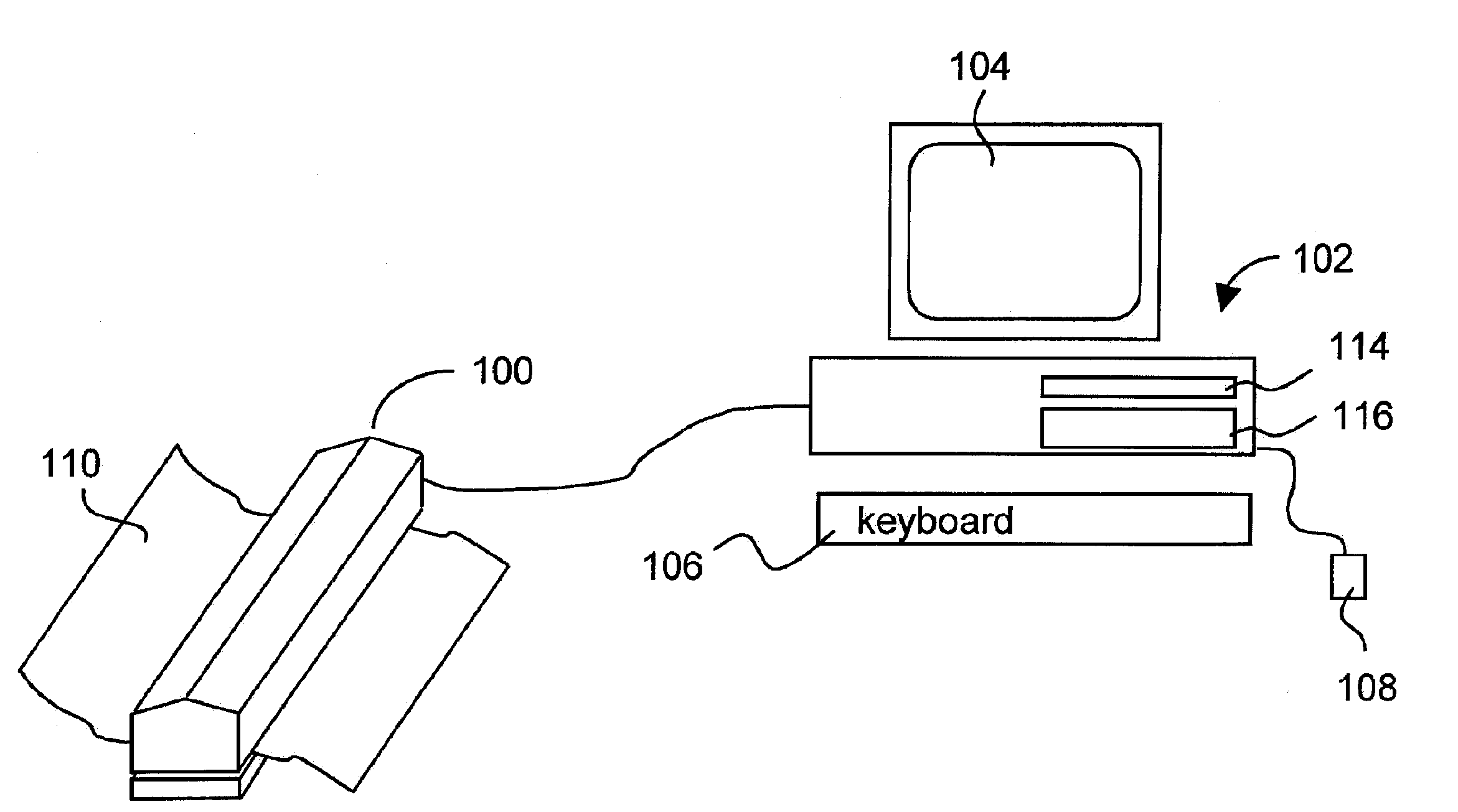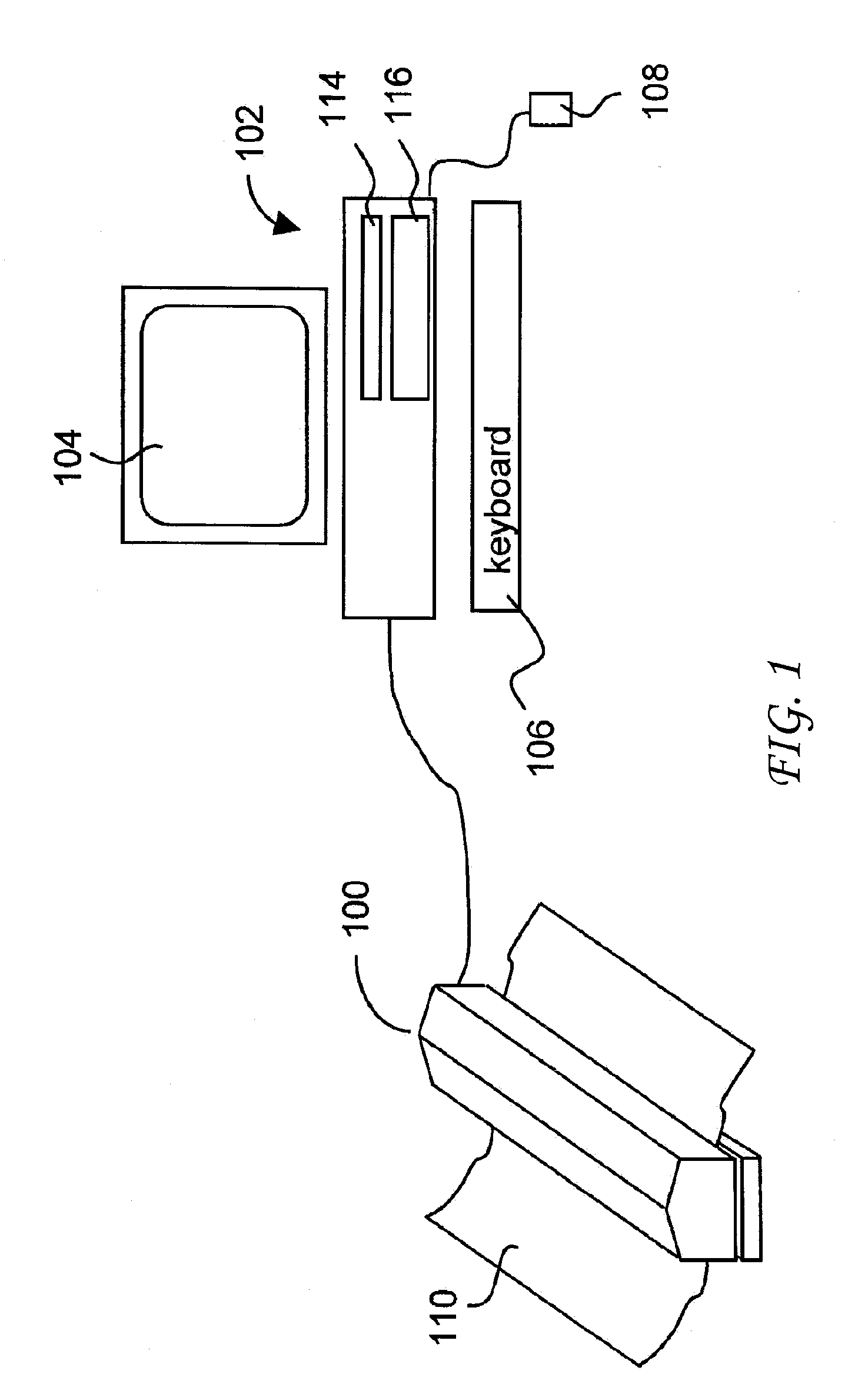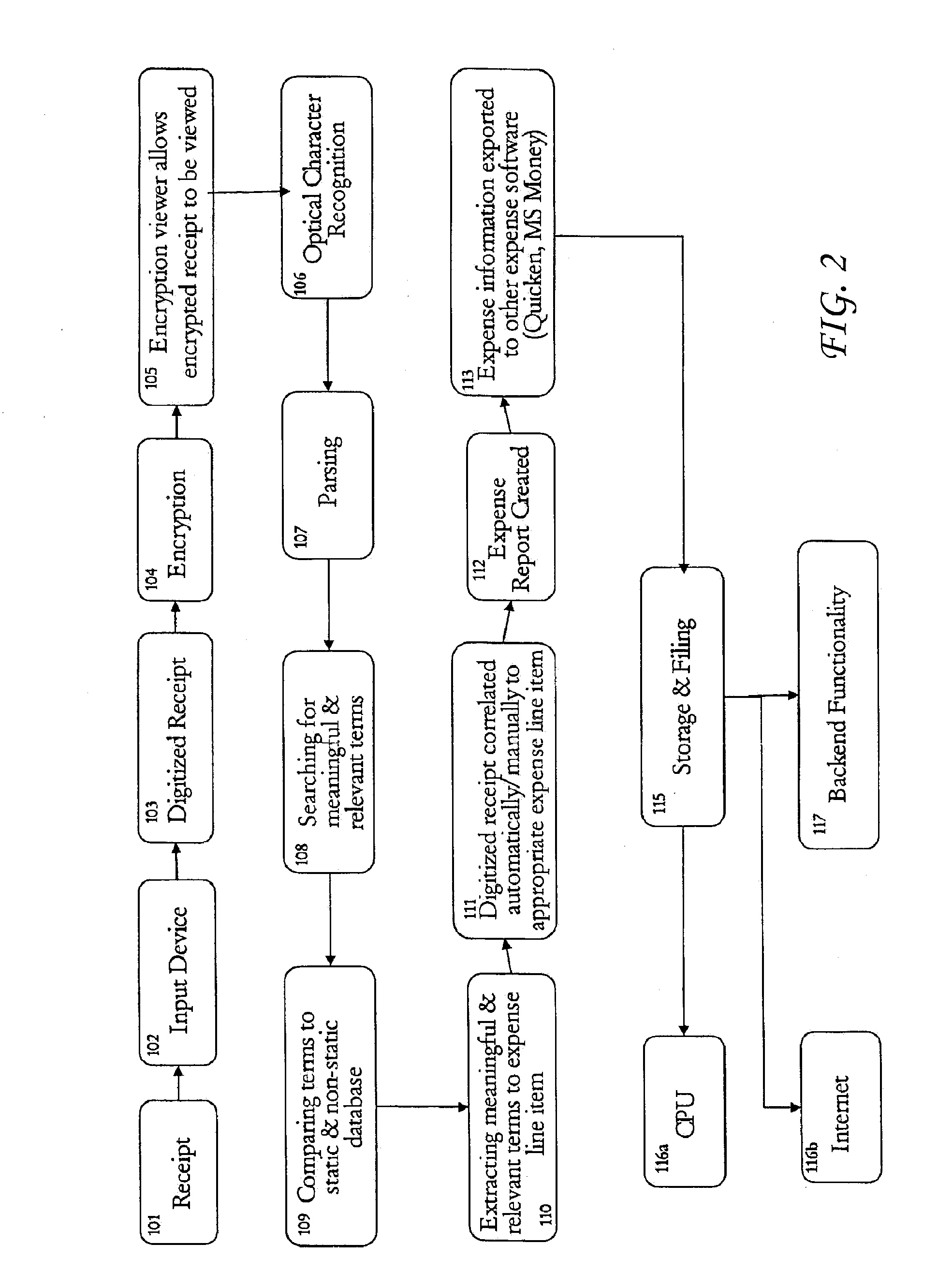Automatic document classification using lexical and physical features
a document classification and lexical technology, applied in the field of automatic document classification using lexical and physical features, can solve the problems of not taking into account the lexical or physical aspects of the information source in the method, and the features used in this system for classification cannot be used in the classification of text-based documents
- Summary
- Abstract
- Description
- Claims
- Application Information
AI Technical Summary
Problems solved by technology
Method used
Image
Examples
Embodiment Construction
[0020]Preferred embodiments of the invention will be described in detail below with reference to FIGS. 1-6. Those skilled in the art will appreciate that the description given herein with respect to those figures is for exemplary purposes only and is not intended in any way to limit the scope of the invention. All questions regarding the scope of the invention may be resolved by referring to the appended claims.
[0021]FIG. 1 illustrates a schematic diagram of a portable scanning system that may be adapted to scan documents for classification using the techniques of the invention. As illustrated, sheet-fed scanner 100 is connected through communication cable 112 to a computing device 102, which may be a desktop or laptop computer, for example. Scanner 100 scans a sheet 110, which may be a sheet of paper, a receipt, a business card, or the like, and digitizes the text and graphics thereon in a conventional manner. The scanning result is generally a grayscale digital image that is trans...
PUM
 Login to View More
Login to View More Abstract
Description
Claims
Application Information
 Login to View More
Login to View More - R&D
- Intellectual Property
- Life Sciences
- Materials
- Tech Scout
- Unparalleled Data Quality
- Higher Quality Content
- 60% Fewer Hallucinations
Browse by: Latest US Patents, China's latest patents, Technical Efficacy Thesaurus, Application Domain, Technology Topic, Popular Technical Reports.
© 2025 PatSnap. All rights reserved.Legal|Privacy policy|Modern Slavery Act Transparency Statement|Sitemap|About US| Contact US: help@patsnap.com



